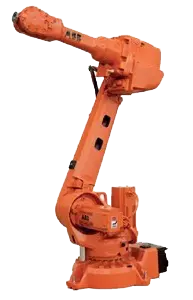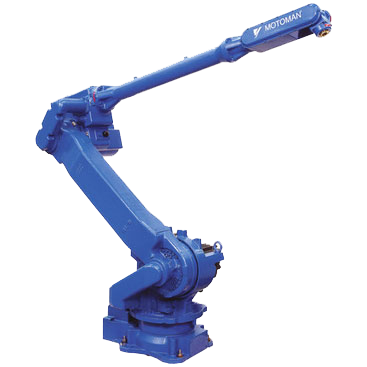Robotic Welding Packages
Robotic welding packages have become quite common in the industrial world. Their rise in popularity is due to manufacturers recognizing their ability to increase weld efficiency, quality, and productivity. Robotic weld packages typically feature a welding robot that is integrated with a welding power source, welding torch, and a wire feeder. These systems can be pre-engineered or customized and vary based upon the type of weld being performed along with other specifics of the application.Power Source
The first component of a robotic weld package is the power source. A power source is a device that provides the electric current needed in order to complete an arc welding application. Lincoln Electric and Miller Electric are two popular manufacturers of welding power sources that can be integrated with industrial robots. Lincoln Electric’s line of Powerwave power sources, such as the i400, are capable of performing a variety of welding applications including TIG, MIG, and STT. Lincoln’s Powerwaves pair nicely with FANUC controllers and robots like the Arcmate 100ic.Miller Electric’s line of Auto Axcess welding power sources are designed to handle a variety of MIG robotic welding applications. Miller’s Auto Axcess models pair well with both Motoman robots, like the MA1400 and FANUC robots, such as the Arcmate 120ic. When selecting a power source, it is important to consider the level of power needed, how efficient the source is, ease of use, and compatibility with the robot selected. ABB robots such as the ABB 2600 can also be integrated with these welding power sources to perform an arc welding application.
Weld Torch
The second component of a robotic weld package is the welding torch. The type of weld torch selected is greatly dependent upon the type of welding application to be performed. Weld torches are a type of end of arm tooling (EOAT) that are fitted to the end of a robot arm. Through arm welding torches are the most popular type in use in today’s industrial world. With this option the cabling is run through the robot arm. This helps to protect the cable, prevent wear, and increase the longevity of the weld torch system. The less common weld torch option is the over arm weld torch. With this option the torch and cable are located outside and offset from the robot arm. With over arm weld torches the cable is exposed, but this can allow for easier access if maintenance is needed.Wire Feeder
The final component of a robotic weld package consists of the wire feeder. Wire feeders are used to add filler metal during the robotic welding application. Wire feeders allow for a constant feeding of the filler metal to the weld pool. Wire feeders can be mounted to the robotic arm and are often separate from the power supply. The first step when selecting a wire feeder is to determine the type of DC power source needed for your welding application. Wire feeders can be paired with three DC power sources, Constant Voltage (CV), Constant Current (CC), or one with both CC/CV. CV is best for wire welding, most commonly either MIG or flux cored, while CC is best for stick or TIG welding, and CC/CV can be used for all welding processes. Once you narrow down the DC power source needed then you can select the type of wire feeder to use. The first type is called Constant Speed and uses only a CV power source. The second type is called Voltage Sensing and can use either a CV or CC power source.Robots Done Right is the place to start when it comes to used robots. Contact us if you are interested in buying or selling your used robot.




